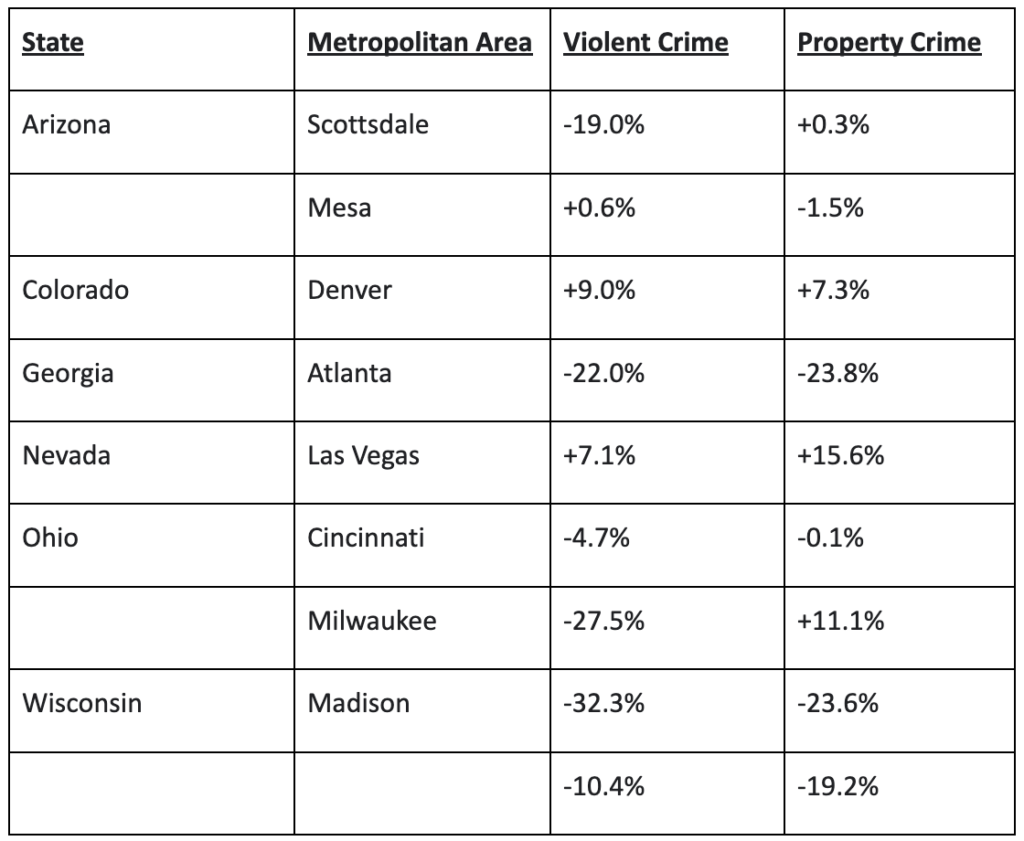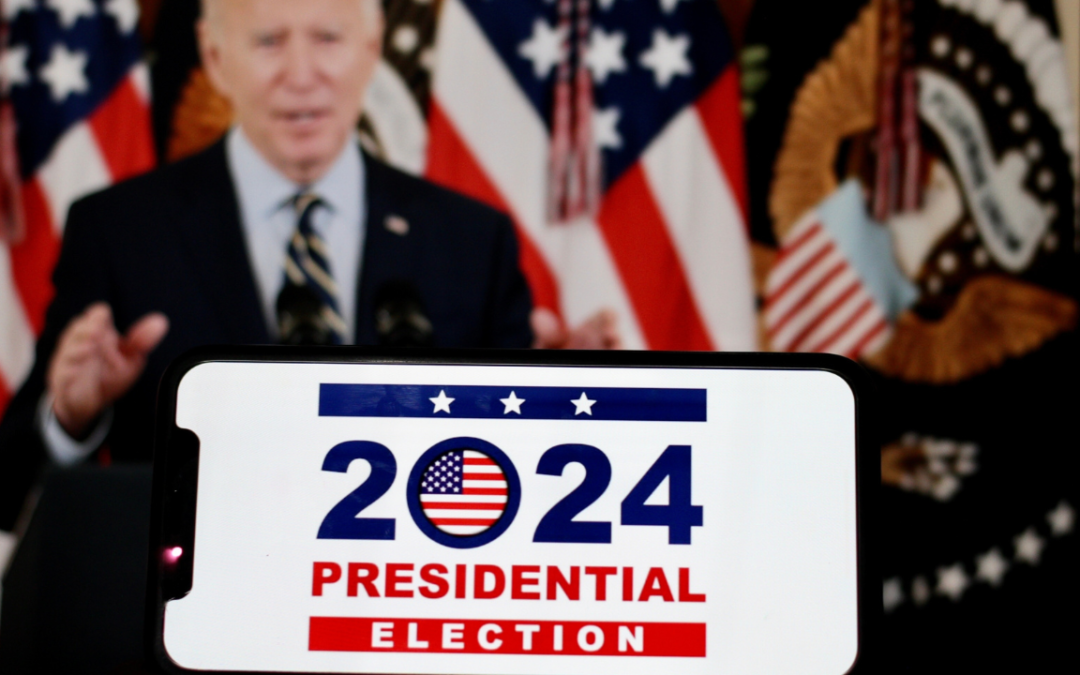The US mid-term elections are less than one month away. A great deal hangs in the balance, including control of the US Senate and House, as well as various state governorships, legislative majorities, and key state-wide offices. The outcome of the mid-terms may also have large impacts on the 2024 US presidential elections.
Although most observers believe that pocket-book issues—inflation, the stock market and employment prospects—will figure prominently in voters’ minds, various surveys suggest that crime is nearly as important.
For example, in a recent September 21-25 Monmouth University poll, crime was cited as an “extremely” or “very” important issue by 72% of the polled 806 adults. Among the many issues addressed in the poll, only inflation was cited as “extremely” or “very” important by a higher percentage (82%).
Moreover, crime worries are more pervasive than two years ago when President Biden was elected. In an early March Gallup poll this year, 53% of respondents said they were personally worried a great deal about crime and violence. Two years earlier in March of 2020, only 42% of polled adults expressed that degree of concern.
Such fears reflect news reports of crime statistics and politicians’ responses. Probably the most cited data by the media and politicians are the annual national statistics published in the Federal Bureau of Investigation (FBI) Crime in the United States report. These data are typically reported for a given year at around the end of the third quarter in the following year. This year the October 5 release of the 2021 data generated headlines and widely publicized political sparring and “spinning”.
The following language of the FBI’s statement summarizing the survey data provided grist for controversy and debate.
“Overall, the analysis shows violent and property crime remained consistent between 2020 and 2021. While the aggregate estimated violent crime volume decreased 1% for the nation from 1,326,600 in 2020 to 1,313,200 in 2021, the estimated number of murders increased from 22,000 in 2020 to 22,900 in 2021. The increase of murders constitutes a 4.3% increase. The robbery rate decreased 8.9% from 2020 to 2021, which heavily contributed to the decrease in overall violent crime despite increases in murder and rape rates at the national level. It is important to note that these estimated trends are not considered statistically significant by NIBRS (National Incident Based Reporting System) estimation methods. The nonsignificant nature of the observed trends is why, despite these described changes, the overall message is that crime remained consistent.”
In the media and politics, where one-liner takeaways matter most, the FBI’s statement was a ‘field day’. Many news outlets and the Republican Party trumpeted the point that murders rose 4.3% in 2021. The FBI observation that the increase was ‘not statistically significant’ was ignored or beyond the grasp of all save the small fraction of the population schooled in statistics. Republicans could readily claim, after all, that any murder or rape was ‘significant’. More important, arguably, is the question about why homicides over the past two years have reached their highest levels in a quarter century. Democrats, as the party in power in Washington, preferred to downplay the statistical significance of the violent crime data, but they might be on a stronger footing by noting that the crime surge began in 2020 when the Republicans still controlled the White House.
Meanwhile, professional criminologists have offered their explanations for the ambiguity in the 2021 FBI crime report. According to the Brennan Center for Justice, for example, “changes in the way the FBI reports national crime data complicate understanding of recent crime trends.”
For almost a century, the FBI collected crime information from local police departments through the Summary Reporting System (SRS) as part of its Uniform Crime Reporting (UCR) program. However, a separate and more comprehensive NIBRS (National Incident Based Reporting System) was introduced in 1989. For years the FBI accepted local data in both formats until January 1, 2021, after which data formatted only in the NIBRS system was accepted. However, because of the time and expense of changing local computer systems to accommodate the NIBRS format, around half of the nation’s local police departments (including New York City and Los Angeles) failed to report 2021 crime data to the FBI. Normally, there had been approximately a 95% response rate in this voluntary program.
In this setting, the 2021 crime data reflected FBI statisticians’ estimates of the missing information based in part on what information local police departments made available in non-NIBRS formats. Consequently, the latest annual Crime in the United States report included statistical confidence intervals. Again, trained statisticians could more easily appreciate the vagaries in the reported data than either the media or partisan politicians.
Corroborating data would be helpful to shed light on what is happening to crime in America. One such source is the little-know (and under-reported) Bureau of Justice Statistics’ annual National Criminal Victimization Survey (NCVS) that was released on September 20.
According to the Brennan Center for Justice:
“…while the FBI tracks offenses known to law enforcement agencies, it cannot account for crimes that are never reported. The National Criminal Victimization Survey (NCVS), published by the Bureau of Justice Statistics, seeks to account for the difference using a national survey to estimate the rate at which people experience non-fatal crime and violence. It is based on semi-annual sampling of around 77,000 households. This survey shows rates of non-fatal violent crime declining in 2020 and increasing very slightly in 2021.”
Importantly, and irrespective of the source, all the data come with important caveats. For instance, the NIBRS data are estimates based on sampling whereas, until recently, the much more widely reported UCR data reflected a high response rate. Moreover, some criminologists have argued that respondents in the NIBRA survey may be inclined to report events that are not criminal, though they believe them to be. This has been particularly true for minor assaults, which rarely capture the attention of law enforcement.
Also, the latest NCVS survey data do not square with information gathered from local police departments. For instance, the New York City police department reported 488 homicides in 2021—a 4.3% rise over the 468 reported homicides in 2020 and a whopping 53% surge versus the 319 reported homicides two years earlier in 2019. But for the first three quarters of 2022, the NYC police department has reported a 13.5% decline in homicides versus the same period a year ago.
Timeliness is another concern. As noted, the most recent national data lags by a full year. However, some major metropolitan police departments provide the FBI with quarterly data for the current year. The following table presents available data through the second quarter of 2022 for the largest metropolitan areas in six of the states where highly contested US Senate races will be decided in the upcoming mid-term elections. The data present a mixed picture, but overall do not portray a broad-based and alarming increase in crime.
Percentage Changes From A Year Earlier Local Crime (2022 Q2)

Source: Federal Bureau of Investigation
Of course, when it comes to voting, perception often trumps reality. How crime is reported can influence potential voters more than raw statistics. Accordingly, it is worth considering polling data.
A recent July 21-August 1 poll of 1,538 adults by FiveThirtyEight/IPSOS asked the following question. “Which of the following do you feel is currently a bigger issue across the country?” The three choices were “crime”, “gun violence” or “not concerned”. “Crime” was cited by 64% of Republicans, 16% of Democrats and 29% of Independents. On the other hand, “gun violence” was cited by just 29% of Republicans but 79% of Democrats and 56% of Independents.
Keep an eye on Independents. They comprised an estimated 40% of all voters in 2020 and were pivotal in the Presidential election defeats of Hillary Clinton in 2016 and Donald Trump in 2020. Independents are roughly twice as likely to cite “gun violence” instead of “crime” as the bigger issue. Democrats typically do better if ‘gun violence’ is a greater concern, whereas Republicans fare better when the opposite is true. Polling data suggest that for the all-important Independents, ‘guns’ versus ‘crime’ could be critical for the 2022 mid-term election outcomes.
In sum, the economy is top of mind for many voters. But so, too, are crime and gun violence. Indeed, crime and perceptions of crime may be the critical swing factor in the upcoming mid-term elections.



